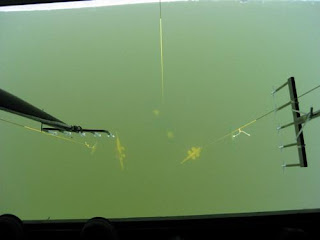The Winnebago System Sturgeon Spearing Season is less than a month away, and anglers are busy preparing for the hunt. Sturgeon spearing is a local tradition that began back in 1932 and is as popular as ever today. The sport has been passed down through the generations and continues to attract new spearers every year. Sturgeon spearing begins on the second Saturday of February and goes until the harvest cap is met.
Recently the DNR has changed the spearing hours. Instead of the sun up to sundown season, the DNR has decided to go with a shorter 6 hour spearing day that goes from 6:30am-12:30pm. The reasoning behind the shorter season is that it allows the DNR to get a better count on the harvest numbers before calling the season. It also helps the DNR avoid overharvesting of our prehistoric fish.
This year the season will begin on February 12 and continue until one of the harvest caps is met. The harvest caps are set at 395 Juvenile Females, 790 Adult Females, and 1200 Males, which is up slightly from last year’s cap numbers. The DNR will close the season when the previous days harvest exceeds 90% or higher in any of the three categories or if one of the caps is exceeded.
Before the season, the thousands of spearers head out onto frozen Lake Winnebago and cut their spearing holes. Some years the ice is thicker than others, but either way most spearers use chainsaws to cut the ice and then with the help of several people, push the big block of ice under and away from the hole. This in itself is a sight to see.
Once the hole is cut and the shanty is positioned over it, spearers then get their shack set up. Visibility varies from year to year, but regardless most spearers like to lower objects into their hole that increase their odds of seeing that elusive Sturgeon. A popular method is to construct an “X” out of white PVC. The “X” is around 6’x6’ and is suspended just off of the bottom. The white PVC allows the eye to detect the dark shadow of a fish pass over the light background of the PVC.
Once the “X” is set up, next comes the decoy. There are many different decoys out there, and many spearers have their own “Lucky” decoy. Most decoys are made of wood and painted bright or flashy colors which many spearers believe attract the curious Sturgeon. The decoys can range in size from a foot to 4 or more feet long! Coffee cans, kids toys, coffee mugs, and many other random human made objects are also lowered into the hole in an attempt to attract Sturgeon and often times work.
The spear itself is the next thing to set up. The spear cannot be in the water until 6:30am, so this is the last thing to prepare for a day of spearing. Most spears are homemade, some being more complex than others. Many pitchforks have been transformed into spears by welding barbs on them and adding weight to them. The typical Sturgeon spear has 4-6 prongs and a detachable head. The spear head is tied onto a rope that is placed on the floor of the shack ready to unwind. The rope should be tied to something solid in the shack in case your Sturgeon takes off!
All of this preparation leads to hours of staring down a hole into the icy waters of historic Lake Winnebago waiting for a chance at spearing a Sturgeon!







1 comment:
Good articles, Have you heard of Mr Benjamin, Email: lfdsloans@outlook.com --WhatsApp Contact:+1-9893943740-- who work with funding service they grant me loan of $95,000.00 to launch my business and I have been paying them annually for two years now and I still have 2 years left although I enjoy working with them because they are genuine Loan lender who can give you any kind of loan.
Post a Comment